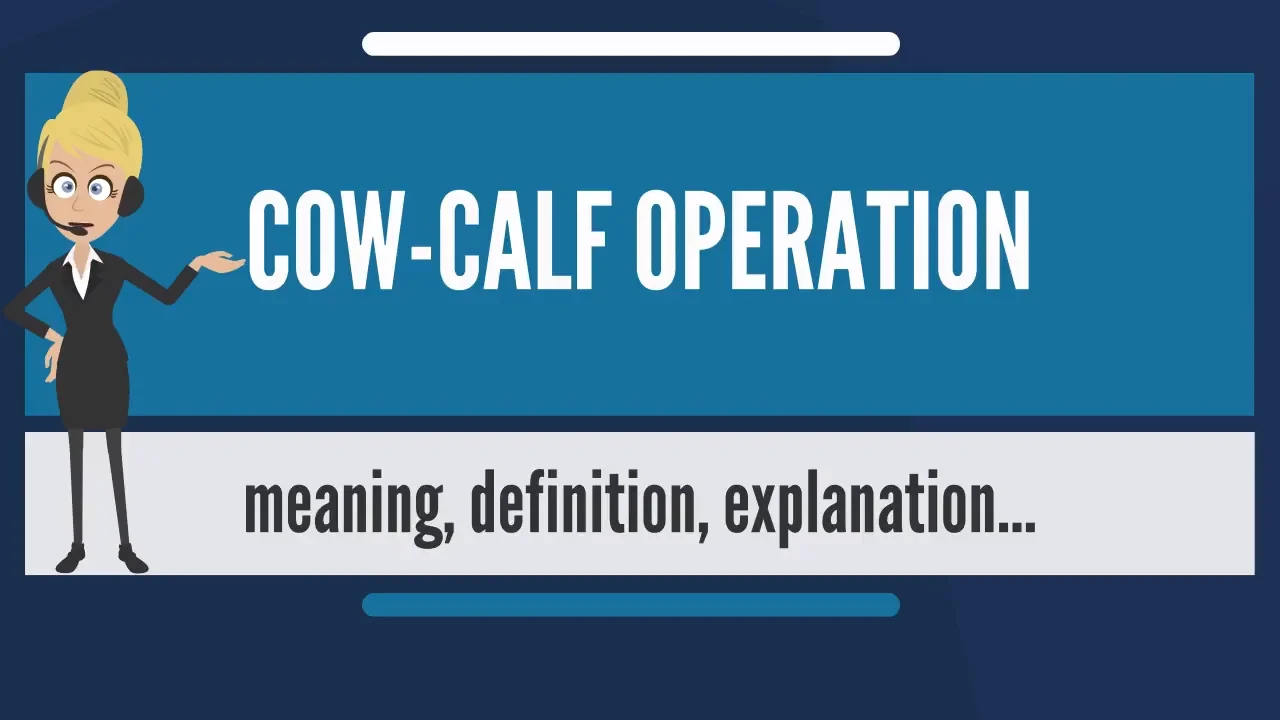**✪✪✪✪✪
http://www.theaudiopedia.com ✪✪✪✪✪**
What does COW-CALF OPERATION mean? COW-CALF OPERATION meaning - COW-CALF OPERATION definition - COW-CALF OPERATION explanation. What is the meaning of COW-CALF OPERATION? What is the definition of COW-CALF OPERATION? What does COW-CALF OPERATION stand for? What is COW-CALF OPERATION meaning? What is COW-CALF OPERATION definition?
Source: Wikipedia.org article, adapted under
https://creativecommons.org/licenses/by-sa/3.0/ license.
A cow-calf operation is a method of raising beef cattle in which a permanent herd of cows is kept by a farmer or rancher to produce calves for later sale. Cow-calf operations are one of the key aspects of the beef industry in the United States and many other countries. In the British Isles, a cow-calf operation may be known as a single-suckler herd. The goal of a cow-calf operation is to produce young beef cattle, which are usually sold. A rancher who works within such a model is often called a "cow-calf operator" in the United States.
Cow-calf operations are widespread throughout beef-producing countries, and the goal of a cow-calf operation is to produce young beef cattle, which are usually sold. True to the name, farm and ranch herds consist mostly of adult female cows, their calves, and young females, called heifers, which will produce calves once of breeding age. Some operations may raise their steers until slaughter weight, others sell them as weaned calves. They may have a few herd bulls and utilize natural mating, but may have no bulls and rely primarily on artificial insemination. Cattle from a cow-calf operation may be sold after they have been weaned to be matured elsewhere, such as at a feedlot, or may be raised to near-slaughter weight and sold at the age of 1–2 years. Older cows and bulls, if kept, may also be sold to slaughter after their reproductive years have ended.
Cow-calf operations generally raise their stock primarily on pasture and other forms of roughage rather than grain feeds, though they may provide vitamin and mineral supplementation. For this reason, they require more land than other cattle operations, such as feedlots, veal and dairy cattle production, or breeding operations that focus primarily on management of bulls for artificial insemination. Pastures may be native or "improved" with forage designed to withstand grazing pressure and help animals gain weight. During periods of shortage, supplementary feeding may be carried out but it is by no means universal. In some areas, pasture is supported by crops for fattening. Intensive rotational grazing systems can reduce the amount of land required; an acre or an acre and half, in some climates, can support a single cow-calf pair for an entire year. Conversely, in countries such as Brazil and Argentina, cow-calf operations may be forced to use more marginal grazing because of changes in the value of land due to high prices for cash crops like soybeans.
Auctions are a common means of sale, although in some cases, prospective buyers inspect sale cattle on the producer's property with the price negotiated either by weight or on a dollars per head basis.
